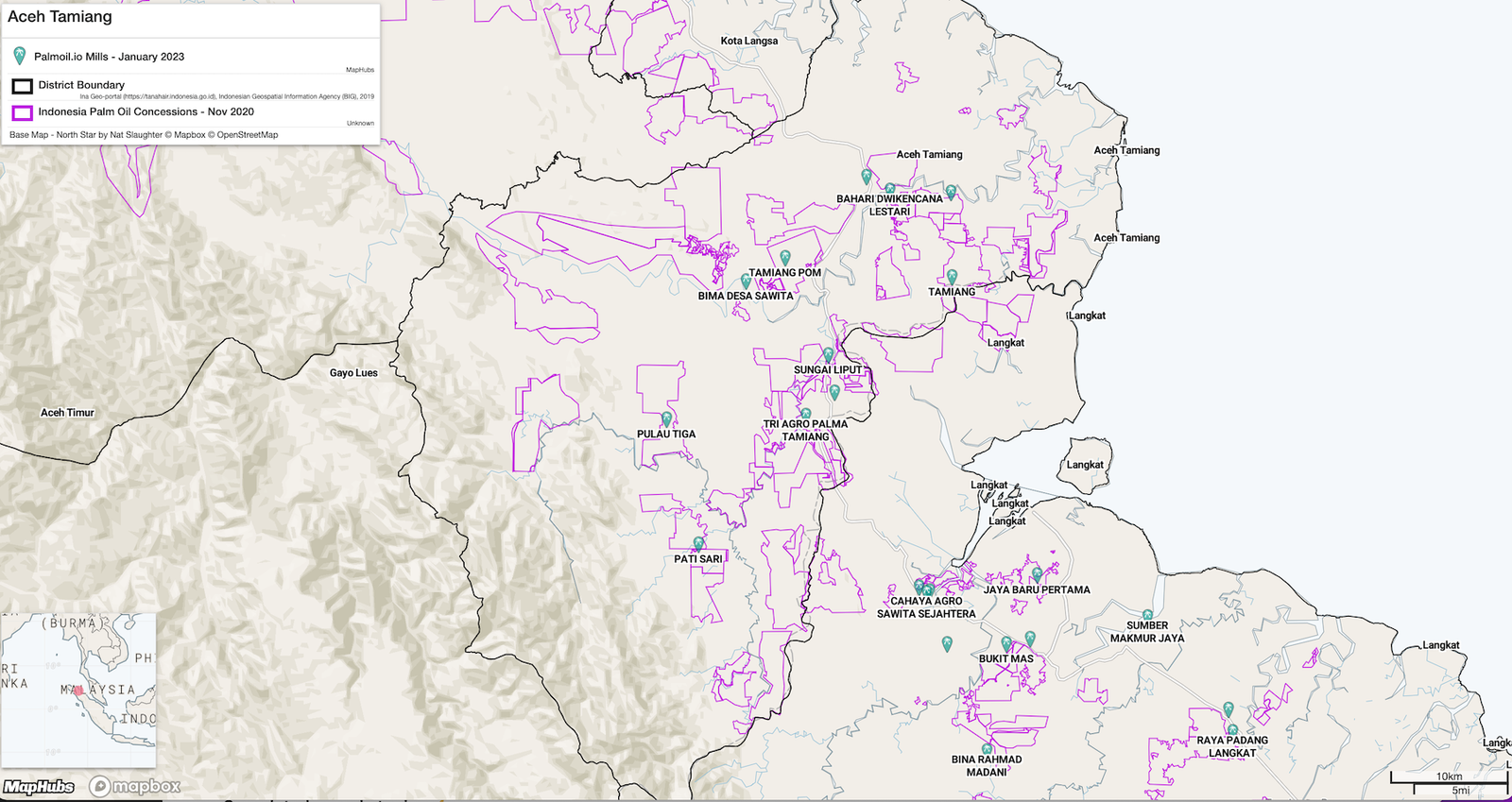To delay or not delay, that is the EUDR question
This post refutes criticisms of the EUDR including the inaccuracy of forest maps, smallholder exclusion, and protectionism. It explains how the EUDR emerged from failure of existing policies. While it is untested, the EUDR presents an opportunity to scale deforestation-free supply chains.

I recently came across this 2014 Guardian article extolling the virtues of voluntary deforestation-free commitments. This quote aged like milk:
“The fascinating thing about these [voluntary] policy commitments is that they are predicated on the very simple idea that a buyer can work with suppliers to specify broadly defined qualities – ethical specifications like no forests destroyed, and no people exploited and so go beyond traditional technical specs like colour, strength, price and so on. No tortuous UN resolutions needed, good practice is rewarded; food is grown in a different way, let the multi-trillion dollar food market work”
2014 was arguably the peak year for voluntary deforestation-free commitments with the NY Declaration of Forests but so far, they have failed to stem the flow of deforestation. In fact, the opposite happened. Average annual primary forest loss is higher after 2014 than before with commodity driven deforestation, the major culprit.

Ten years on, the EU Deforestation Regulation (EUDR) has emerged in response to this failure. The EUDR is a bold but as yet, untested demand-side measure to stem deforestation linked to six commodities imported into one market. But before the EUDR has even gone into enforcement, there has been a barrage of criticism and calls to delay its implementation from a vocal minority of producer country governments, remote sensing specialists, and industry associations.
In this post, I will highlight some of the many flaws in their arguments.
Delay Reason Number 1: There is no accurate map of forest and deforestation

A common criticism from some members of the remote sensing community stems from concerns about the JRC 2020 Forest Map. They argue it overestimates forest, misclassifying many smallholder farms. In an earlier blogpost, we addressed criticisms of the JRC Forest map and open data approaches more broadly. We pointed out that misclassifications were almost exclusively taken from coffee and cocoa farms in the deforested landscapes of Cote d’Ivoire and Ghana. The JRC map is not perfect, but there are plenty of open data datasets that can be used to make improvements.
Furthermore, there will never be a global map that satisfies every remote sensing analyst’s opinion on what should be forest and deforestation. All forest maps and deforestation alerts derived from satellite data have margins of error. The EU understood this, which is why they have not produced an official forest map. You can use the JRC map or a different map; it’s entirely up to you. The important point is that the EUDR has a clear definition of forest and deforestation. You may not like it, but your analytics will need to be monitored according to the definition. EUDR needs to be implemented with what exists today and adapt as data and technology continues to improve, otherwise we could be waiting forever.
Delay Reason Number 2: Smallholders will be excluded

Companies, producer country governments, and certification bodies argue that a delay is necessary because most smallholders have not been mapped. Without maps, a number of plantation companies have already said they will need to exclude them.
There are many problems with this. First, if a delay, then how long for? Until every smallholder is mapped? There are millions of unmapped smallholders, and the maps also constantly change as new farms are added to the supply chain, or boundaries are redrawn. This is not the EU’s fault. For example, the RSPO has existed for 20 years, but due to cost and complexity, less than 3% of palm smallholders have been RSPO certified. By contrast, EUDR compliance is much simpler - map your plot and analyze that it’s deforestation-free. The vast majority should qualify and SPKS, an Indonesian smallholder association, estimates mapping costs as low as $10 per farm.
Second, smallholders grow almost all the cocoa, coffee, and rubber imported into Europe, so unless Europeans are willing to forgo chocolate bars, their morning coffee, and tires on their cars, excluding smallholders would be practically impossible. If those industries are preparing, why can’t the palm oil industry? And despite some palm oil companies indicating that they will simply exclude smallholders, this is not feasible. Smallholders contribute over 40% of total palm oil volumes, so excluding them could make hundreds of palm mills unprofitable. And hundreds of mills are needed to supply the EU, particularly for palm kernel oil derivatives.
Third, smallholders are already being discriminated against. From forced labor violations, land grabbing, discriminatory pricing practices, smallholders already face major obstacles and barriers to market. The EUDR’s traceability and legality requirement provide a strong incentive for EU operators to engage with plantation companies and work with them to respect land rights and negotiate prices in good faith with smallholders.
Delay Reason 3: It’s bad for trade and the economy

Producer country governments have been arguing that the EUDR is a protectionist measure, designed to protect the EU domestic producers from foreign competition, etc. Industry associations are also arguing that the EUDR will push up prices, ultimately raising prices for EU consumers.
The protectionist argument conveniently ignores two important facts. First, all producers have to comply, including EU and US producers. For example, US soy and timber producers also have to comply with the EUDR, including mapping and due-diligence statement requirements, whether forest is present or not, it still has to be documented. Second, there is a financial cost to compliance but the costs are exaggerated with much of the cost required upfront to map smallholders. The costs of year-on-year monitoring will be much lower, particularly for farms that have already been verified as deforestation-free. It seems therefore unlikely consumer prices will be raised, solely due to the EUDR.

There are lots of co-benefits to mapping your suppliers. Mapping and tracing suppliers is increasingly becoming the norm across industries, not just those sourcing forest-linked commodities. Knowing who and where your suppliers are will help downstream companies track how they are performing, provide extension support, track weather and soil conditions, offer credit, and a whole host of other services. A well mapped supply chain is an intelligent supply chain.
The EUDR bus has already left the station
It is likely already too late to delay the EUDR. The EU public remains broadly supportive of the EUDR and would not take kindly to their politicians trying to repeal or weaken it. A delay would also punish the hundreds of companies who have already made major efforts to comply. Last week, Barry Callebaut - one of the world’s largest cocoa product and chocolate manufacturers - explained that they had mapped thousands of cacao smallholders in their supply chain. They acknowledged that this was far from easy but complying with the EUDR has helped accelerate existing mapping efforts.
A delay would also undermine the burgeoning service provider industry. Far from driving up costs, service providers, including us, are building a dynamic and innovative market, which offers companies the best value for money to monitor deforestation.
We’re not going back
No one likes regulation. Believe me, as a small business, navigating labyrinthine federal and state laws just to sell software is expensive and arduous. But if you agree with my arguments, the EU really was left with little choice. The status quo of voluntary measures resulted in a swiss cheese of weak and overlapping “commitments” that are poorly enforced, if at all. And most critically, we are still losing primary rainforest at alarming rates. Even the most fervent anti-EUDR critics have to admit the situation regarding the world’s remaining rainforests is dire, and industry has not successfully policed itself. Something had to give.
What we need to do

In my opinion, we have to give the EUDR our best shot. It’s undoubtedly big and complex but if it succeeds, the EU and all the companies that import into it will have successfully demonstrated that a major demand market can produce goods that are both demonstrably deforestation-free and legal. We will find ways to do this cheaper and faster and provide strong incentives for other deforestation-causing markets such as the US, China, and India to follow suit. If we can show them it can be done, we make a powerful case for getting everyone to do it. Let’s get mapping.
For more information about Palmoil.io and our EUDR compliance tools, please visit https://www.palmoil.io/eudr.

